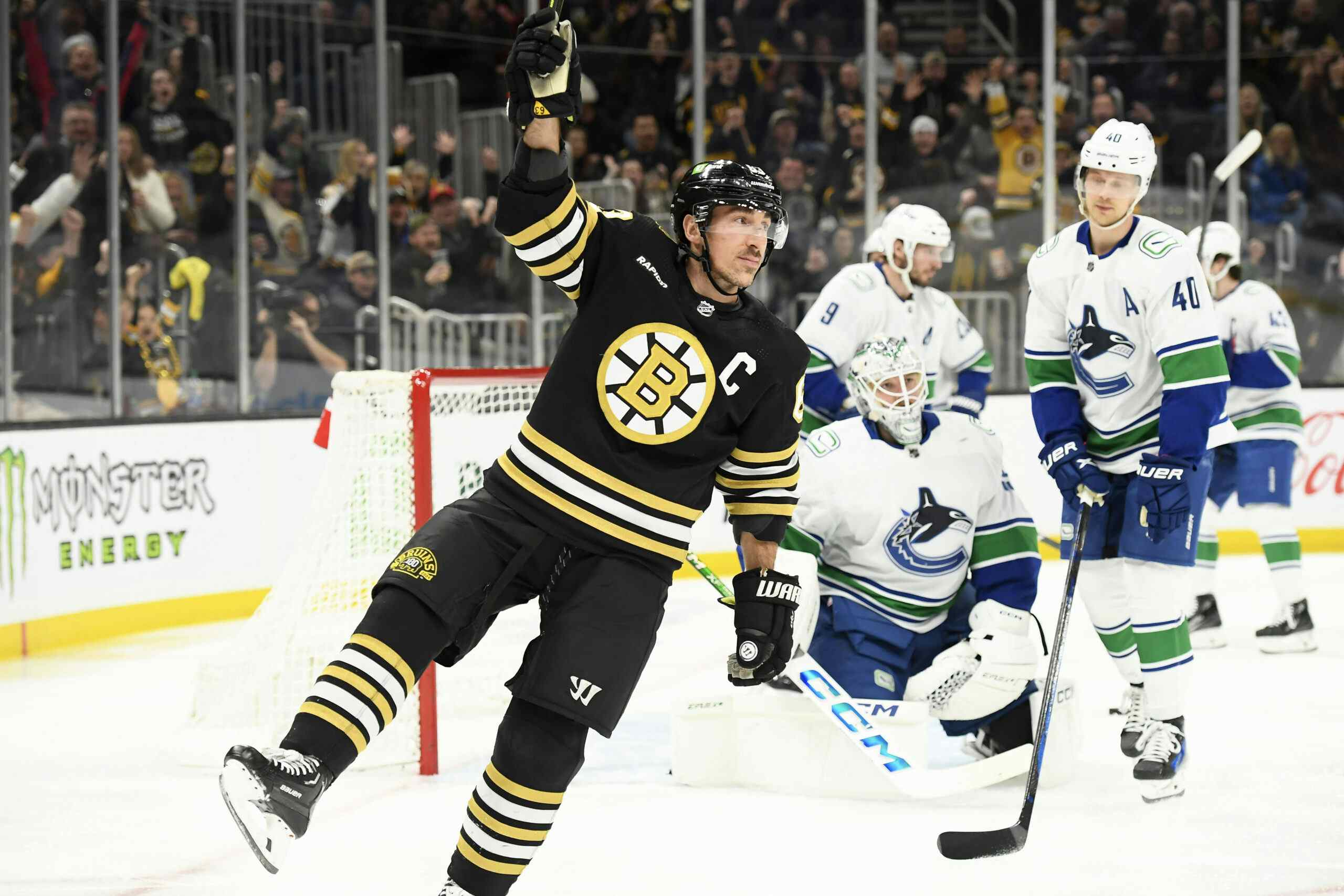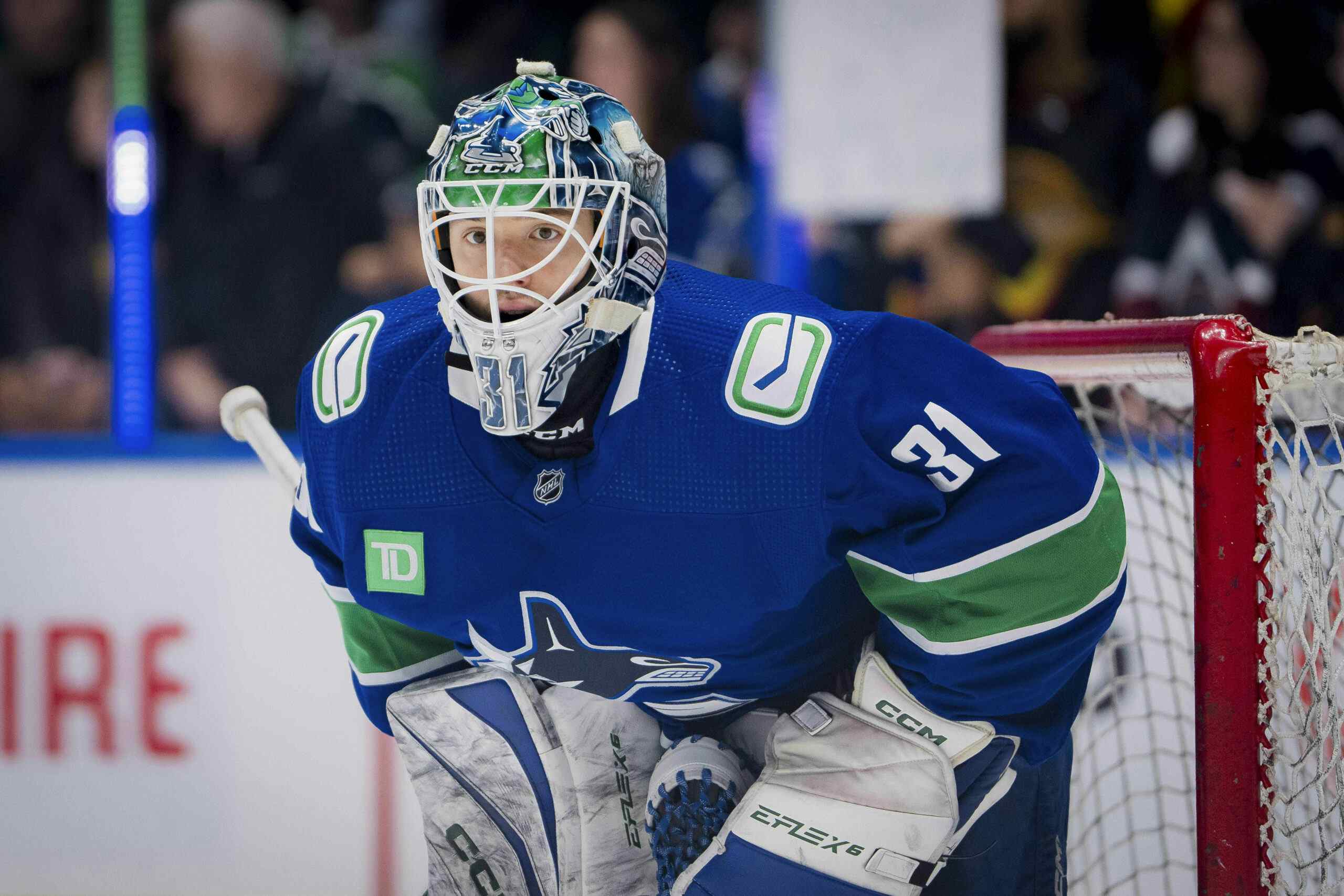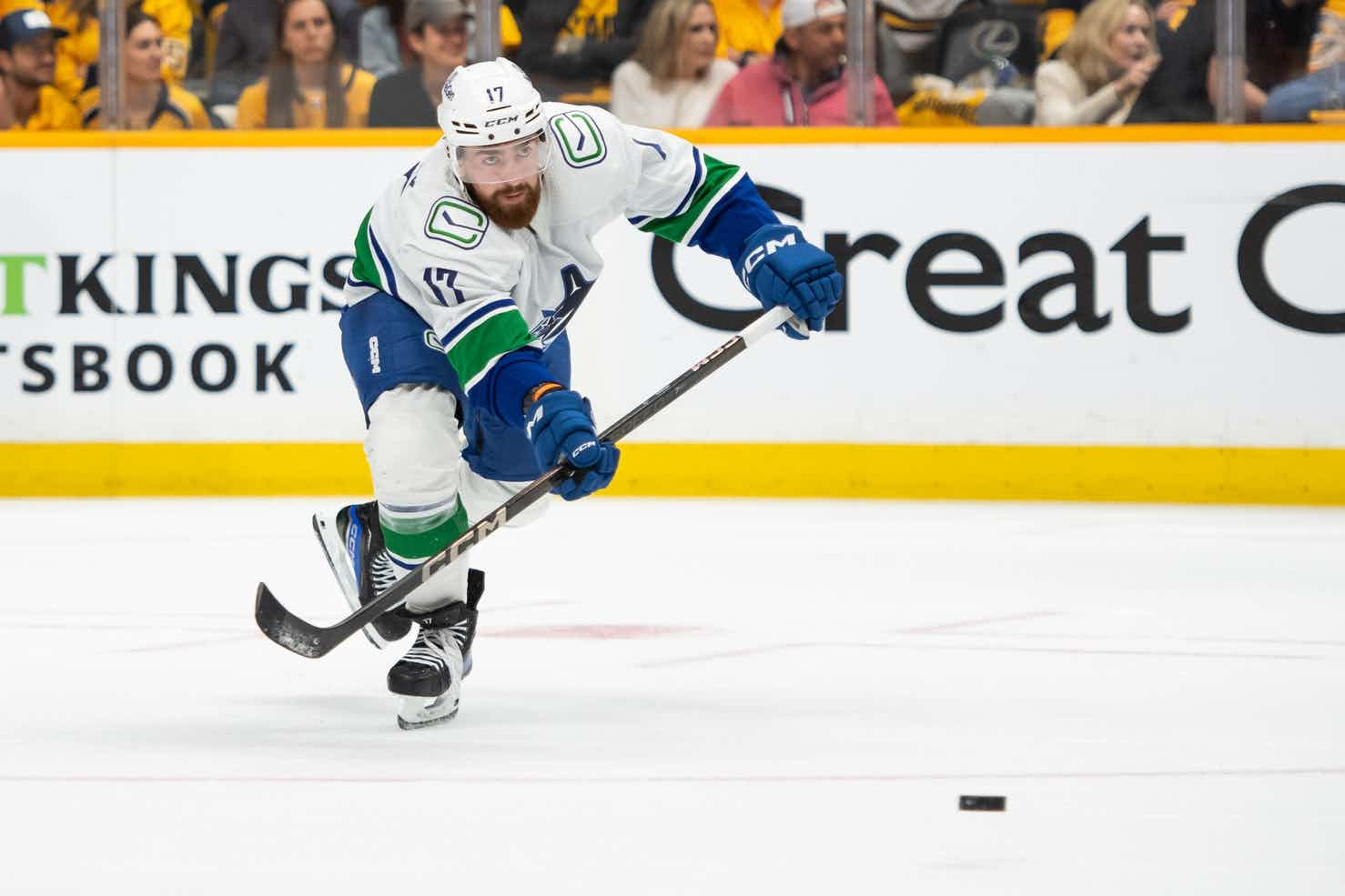On Drop Passes, Power-Play Execution and Push Ups

Alex Burrows failed to score on this golden power-play opportunity on Tuesday.
That fact pretty much sums up Vancouver’s power-play the past two weeks, actually.
Photo Credit: Derek Leung/Getty Images
We’ve talked about it a bunch this week, but Vancouver’s power-play has gone cold.
Since an Alex Burrows’ power-play marker scored way back on February 21st against the Dallas Stars, the Canucks have failed to ripple the mesh on twenty-two straight power-play opportunities. Since Ryan Kesler (the team’s most efficient power-play scorer and power-play shot leader for the past three seasons) went back onto the injured reserve with a broken foot, the power-play has gone zero for ten.
Much, much more on Vancouver’s power-play woes after the jump.
To sum the issue up as concisely as possible: the Canucks are failing to generate shots at a remotely acceptable rate with the man-advantage. Aside from the average goaltending the team has recieved from Cory Schneider this season, the power-play is probably the single area of the game that is the biggest cause for concern through nearly half of the 2013 season.
But the Canucks don’t appear to believe that their power-play personnel is at the heart of the issue. At today’s practice in Minnesota, the Canucks are "wooding" with the same group they’ve used since Kesler went down with another injury. (One minor exception to that: Jordan Schroeder, who is currently filling in for Kevin BIeksa on the first unit, centered the second unit when BIeksa played against the Kings. Now that BIeksa is injured agian, Schroeder’s back on the top-unit and doesn’t seem likely to go anywhere before Sunday’s game).
Needless to say, the lack of significant power-play adjustments will do nothing to calm the nerves of the "other teams have solved Newell Brown’s power-play system" crowd. As such, we can expect the Canucks coaching staff to draw criticism for "hubris," if the power-play continues to struggle. I’d mention that that’s a very realistic possibility since the Canucks play the Minnesota Wild on Sunday and though the Wild continue to be pretty much terrible at even-strength and at scoring goals, they’re dynamite on the penalty-kill.
Instead of making any personnel changes to the power-play, the coaching staff seems to have taken a different approach to to fixing Vancouver’s man-advantage performance:
At least in practice, it didn’t seem to:
Push-ups, eh?
Yeah that seems like a pretty weak sollution. Then again, in an effort to get a better handle on the power-play’s recent struggles, today I went back and watched every Canucks power-play since Ryan Kesler returned to the injured reserve. What’s interesting is that to the eyes at least, Vancouver’s power-play continues to look polished and dangerous – even if that isn’t translating into shots on goal.
In particular, the first unit has managed to gain the blue-line with ease and polish. The first unit – relying mostly on Alex Edler’s stellar play in the neutral zone – have gained the blue-line and recorded at least a shot attempt 90% of the time over the past four games. That’s really good even if the club’s overall power-play shot rate is still low.
What follows is a tome of a post wherein I break down the first power-play unit’s zone-entries over the past week. If Newell Brown’s systems have really been "figured out" by the opposition, well it certainly isn’t showing up in Vancouver’s neutral zone play.
Here’s some fun images demonstrating how opposition penalty-kills are over-playing the Alex Edler drop-pass zone-entry set play that so frustrates Canucks fans:

Obviously this image is from Tuesday night’s game against Columbus. Hilariously the Blue Jackets have two forwards defending Alex Edler from behind in anticipation of the drop-pass. In response, Alex Edler skates in alone at the two Columbus defenseman and tries to get a shot through. He doesn’t, and instead falls down as the Canucks retrieve possession and eventually settle for a low-percentage perimeter shot.
Obviously that’s not the best result, though Edler’s read (to challenge the two defenders playing deep below the blue-line) strikes me as defensible, and it did result in a clean offensive-zone possession for the Canucks.

The above image is similar and it’s from Tuesday night’s game against the Sharks.
Now San Jose’s penalty-kill has been damn good this season with the addition of Assistant Coach Larry Robinson and in particular Brad Stuart (who had a mammoth short-handed performance on Tuesday). In the above image you can see that the Sharks penalty-killers are also making a point of over-playing the drop-pass with a defenseman playing behind Alex Edler in the neutral zone.
Edler doesn’t go for the drop pass and instead flips the puck to Daniel Sedin who is seen in the image above waiting at the blue-line in front of Vancouver’s bench. Using the drop-pass as something of a decoy, the Canucks gain the zone-cleanly leading to a point shot through traffic that Niemi does well to save.
On to the next zone-entry:

Again: the Sharks have a penalty-killer (this time it’s Michael Handzus) defending Edler’s potential zone-entry from behind. Edler takes a couple more strides and then hits Alex Burrows (who is just about to cross the red-line in the above image) with the pass, leading to a Canucks scoring chance thirteen seconds later.
Later in the third period against San Jose, the Sharks didn’t quite get set up to harrass Alex Edler in the neutral zone. Edler sees this, makes a good read and completely guts San Jose’s penalty-kill formation to gain the zone.
Here’s why that impresses me: Alex Edler has made an effective adjustment. He basically knows that Handzus will be hanging back and so he uses the anticipated drop pass as a weapon, and attacks the Sharks’ neutral-zone penalty-kill formation out-right.

Handzus is caught flat-footed here and waves lazily at Edler with his stick.

Edler makes a move around Handzus and has him beat by a couple of strides at this point. Brad Stuart (bottom left) is caught a bit flat and Logan Couture (right in the middle of the screen cap) is a bit too far away to catch up to the play and deny Edler entry into the offensive-zone.

Edler has now attracted the attention of three San Jose Sharks. All he does is flip the puck around the boards where the Sedin twins overload the Sharks defenseman (Douglas Murray) on the weak-side and retain puck possession. We should mention that this particular zone-entry set up Vancouver’s best extended period of power-play pressure in the game (Dimitri counts four scoring chances for the Canucks in quick succession as a result of this particular zone-entry).
Let’s move on. Here’s how the Flames defended Alex Edler in the neutral zone during Vancouver’s regulation loss in Calgary last Sunday:

The Flames had two defenders (a forward and a defenseman) along the blue-line, and an extra defenseman playing deep to guard against a shoot-in. Meanwhile Blake Comeau harrasses Edler as he skates through the neutral zone. This time, Edler goes for the drop pass to Henrik Sedin.

Comeau has been flipped around, and has been taken out of the play as a result of the drop-pass. Edler holds up and effectively provides a Karl Malone pick for Henrik who dishes the puck to Daniel (standing right in front of the Flames bench in the above image). The Sedins play give and go as Daniel steps over the line and the Canucks set up in the offensive end. A few moments later and Alex Burrows ends up with a scoring chance that Danny Taylor does well to smother.
On Vancouver’s second power-play of the evening, the Canucks deploy a fun sneaky pick to take advantage of Calgary’s "three defenseman deep, one forward disrupting things in the neutral zone" penalty-kill formation. Here’s Edler skating with the puck (Schroeder and Henrik skate behind him as drop-pass decoys).

Steve Begin (the Flames player at the blueline) is ostensibly the Flames’ neutral zone defender, but Alex Burrows engages him and promptly falls over to take Begin out of the play:

Begin – to his credit – doesn’t quit on the play as he hurdles over a prone Alex Burrows. But Begin is already beaten and off balance as Edler approaches the offensive zone with options.

And here we go: Alex Edler has taken full advantage of Burrows’ cagey neutral zone pick. The Flames are bunched up and committ to challenging him at the blue-line.

Edler has completely busted the Flames’ penalty-kill formation and now that he’s gained the zone and attracted every Flames penalty-killer on the ice, he flips the puck neatly to Daniel Sedin (again at the top of the image in front of Calgary’s bench). Daniel settles the puck, waits for Alex Burrows to skate to the front of the net and set up in front of Danny Taylor and sends a screened slap shot at the Flames goaltender that Burrows redirects high and wide. Another zone-entry resulting in a borderline scoring chance (Kent Wilson over at flamesnation.ca counted it, I did not).
Same power-play, with time winding down in the first period. The Flames appear to have made an adjustment with two forwards defending in the neutral zone on the penalty-kill.

In the above image, Edler has the puck and – you guessed it – completes a drop pass to Henrik Sedin…

In the above image, Henrik Sedin had recieved the drop pass and now has several options with the clock winding down. He’s got his brother set up along the blue-line by the Calgary bench, and he’s got Burrows and Schroeder trailing (just in case he wants to double down on the drop-pass).
Henrik does ultimately pass the puck to the trailer (Jordan Schroeder) who flips it to Daniel by the Flames bench. Daniel steps over the line as Alex Burrows heads for the net. Daniel stops up, holds the puck and fires a D-to-D pass to Alex Edler for a screened one-timer.
It’s not a scoring chance, but with time ticking down the Canucks utilize the drop-pass to author a polished, effective set play that allows them to gain the zone and create a scoring opportunity.
This same power-play continued in the second period, and Bob Hartley made a clear adjustment during the intermission. No longer are the Flames playing one forward in the neutral zone while bunching a forward and a defenseman along the blue-line, with a second d-man deep. Nope, on this zone-entry the Flames are now anticipating the drop pass:

Edler steps over the blue-line and flips the puck to Daniel Sedin who wins a puck battle and looks poised to set up possession in the offensive end. This would’ve been another nice zone-entry (completed by using the drop-pass as a decoy) but Daniel gets his stick caught in Lee Stempniak’s skate, takes a tripping minor and eliminates the power-play opportunity… Poor execution (a bit of a theme here) but nothing wrong with Vancouver’s systems play.
Though San Jose’s penalty-kill is much improved this season and the Columbus Blue Jackets are also a solid team when it comes to short-handed play, of the four opponents the Canucks have faced since Kesler’s re-injury, the Los Angeles Kings are the best at playing four-on-five.
Unsurprisingly, they had the best system for disrupting Vancouver’s neutral zone sets, but even then the Canucks’ first-unit pretty much had their way with Los Angeles’ penalty-killers in this area.
In contrast with the way Columbus, Calgary and San Jose tried to anticipate the drop-pass in the neutral zone, Sutter’s Kings aggressively challenged Edler at Vancouver’s blue-line. Here’s Kopitar doing just that:

Edler smartly passes out of trouble to his defensive partner on the first unit (Kevin Bieksa in this game, rather than Jordan Schroeder). He then follows up on the play as Kevin Bieksa takes the puck up ice and steps over the blue-line.
In the below image Bieksa is about to send a nifty return back-pass to a supporting Alex Edler:

The Canucks set up in the zone and ultimately create a dangerous scoring opportunity on an Alex Burrows wrap-around attempt that Jonathan Quick only just foils.
Vancouver’s second power-play during the game against Los Angeles, comes late in the second period. Drew Doughty took a bit of a soft interference penalty against Henrik Sedin with twelve or so seconds remaining in the frame.
What’s interesting about this power-play for our purposes, is that the Canucks had an intermission to talk about it. Did Newell Brown "fail to adjust" to the opposition who have "figured him out," or rather did he have an antidote for the Kings aggressive system? The answer, perhaps surprisingly, is the latter.
On this zone-entry Alex Edler starts out behind his net and rather than surveying the neutral zone at half pace – as he usually would – he immediately takes off. Using his often deceptive neutral zone speed, Edler catches both Kings forwards flat footed:

In the above image the Kings forwards realize they’re screwed. In the below image, that becomes clear to the viewer:

Edler has both Kings forwards beaten by several strides at this point. He steps cleanly over the blue-line, carries the puck behind Los Angeles’ net makes a move to allow Vancouver’s forwards time to create traffic in front and takes a point shot. The Canucks retrieve that puck and ultimately dish it off to Alex Burrows who records a scoring chance on the possession. No goal though because the Canucks can’t buy a break with the man-advantage of late.
Earlier this week I mentioned that the Canucks’ anemic power-play shot rate was a serious cause for concern. Looking at their power-play in a more indepth way today, however, I’m a lot less worried about the team’s performance with the man-advantage.
The issue at hand appears to be a combination of luck and the club’s offensive zone execution, which hasn’t been that good. The team’s systems are fine to my eyes and are especially potent in transition, even against really good penalty-killing teams like the Kings, Blue Jackets and Sharks. It looks to me like far from being "figured out" by the rest of the league, the Canucks are still able to toy with the opposition when entering the zone, use the drop-pass as an effective decoy, and generate scoring opportunities using a variety of different looks on the rush.
From an x’s and o’s standpoint the real issue seems to be that the Canucks aren’t doing a good enough job winning battles and outnumbering the opposition down low on the power-play. Also, too often the puck movement in the offensive end simply isn’t crisp enough.
While the push-ups that the Canucks power-play personnel did at practice today seem like a pretty weak answer for what ails the team at five-on-four, I think it makes sense when you look in detail at what’s going on. The personnel isn’t the issue and Newell Brown’s system looks to be functioning fine. It’s the execution that needs fine tuning, and to that end at least the push-ups target what appears to be the real issue.
Recent articles from Thomas Drance





